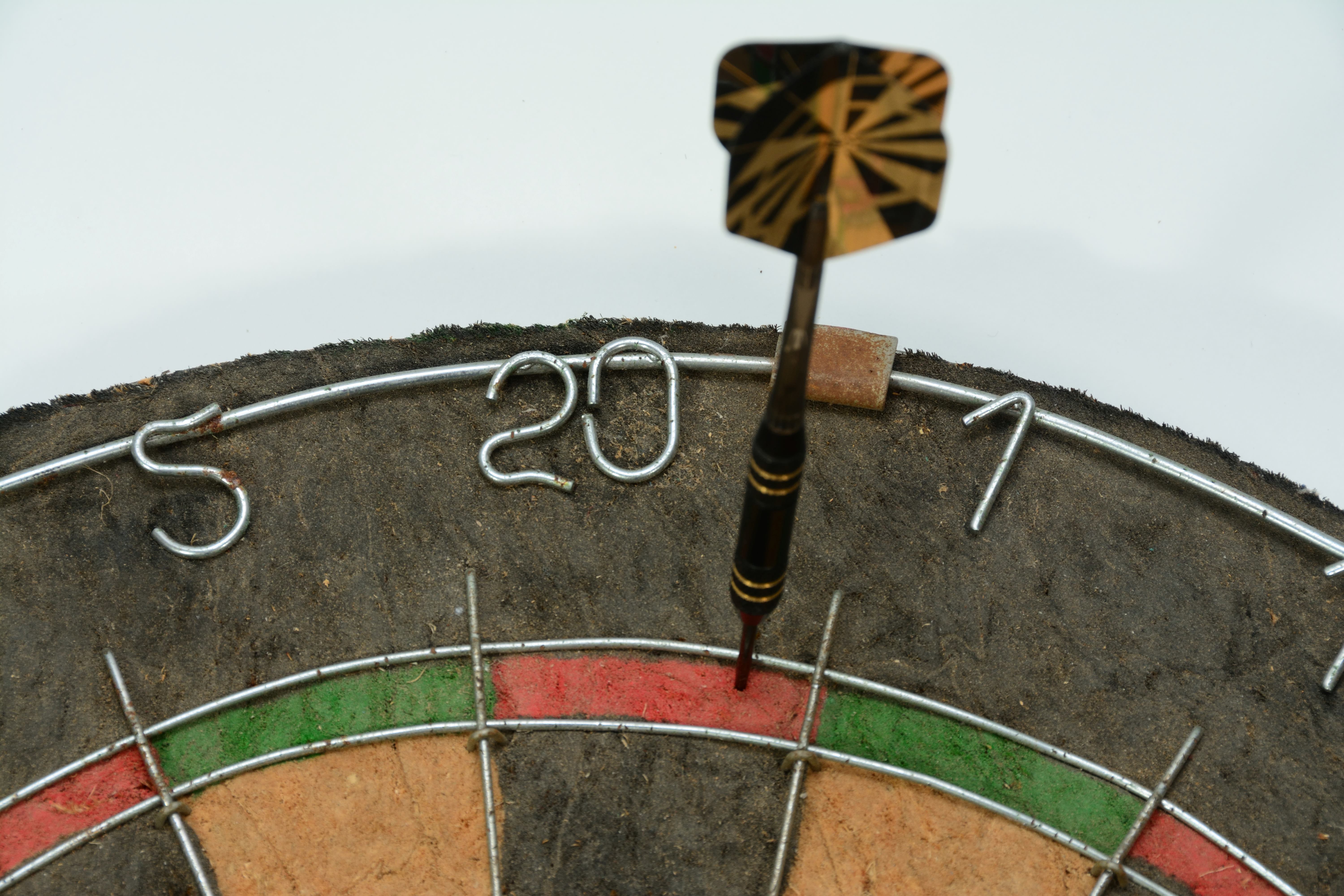301 Darts
Rules & Strategies for 301 Darts
There are many games played with a dart board and a set or two of darts. Games like 301 are popular, thrilling and enjoyed by people of all ages and skill levels.
One of the most common dart games is 301, which requires players to reach exactly 301 points to win.
Here we will delve into the rules and strategies for playing the 301, helping you improve your skills and increase your chances of emerging victorious.
What You'll Need
Before diving into the rules and strategies, let's familiarize ourselves with the equipment and setup required for a game of 301. You'll need:
The dartboard is divided into various segments, each assigned a particular point value. The standard numbering system assigns a score of 20 to the top section, followed by 1, 18, 4, 13, 6, 10, 15, 2, 17, 3, 19, 7, 16, 8, 11, 14, 9, 12, and 5 in a clockwise manner.
The throwing area for darts is 7 foot 9 1/4 inches back from the face of the dart board with the the dart board mounted at 5 foot 8 inches from the floor to the center of the board.
Objective of the Game
The objective of 301 darts is to be the first player to reach exactly 301 points using the fewest possible darts.
Playing 301 Darts
Each player starts with a score of 301 and takes turns throwing three darts. The score of each dart is subtracted from the player's total until they reach zero.
The catch is that players must finish with a double or the bullseye (the center of the board) to win the game.
If a player goes below zero or ends their turn with a non-double or non-bullseye score, their turn ends, and the score reverts back to what it was at the start of their turn.
To understand the scoring in 301, you need to be familiar with the segments on the dartboard. The outer ring is called the double ring and represents twice the face value of the corresponding number. The innermost ring is called the triple ring, where darts score triple the face value. Lastly the center ring is worth 25 with the very center or Bulls eye is worth 50 pints. The area between the double ring, the triple ring and the bulls eye is worth face value.
Strategies for playing 301

Start with Steady Progression:
In the early stages of the game, aim for high-scoring areas such as triple 20 or triple 19. This will help you bring your score down quickly and put pressure on your opponent.
Aim for the Doubles
As you get closer to zero, focus on hitting the doubles section. This will ensure that you finish your turn with a double, bringing you closer to victory. Common doubles to aim for are double 16, double 8, and double 4.
Strategize Around Key Numbers
Pay attention to the remaining score and strategically target numbers that will leave you with an easy double. For example, if you have 32 remaining, aim for double 16 to reduce the risk of overshooting.
Master the Bullseye
The bullseye is a crucial target in 301. Hitting the inner bullseye (50 points) will greatly reduce your score, while the outer bullseye (25 points) can serve as a backup plan when aiming for doubles.
Practice Accuracy and Consistency
Like any sport, darts requires practice. Focus on improving your accuracy and consistency in throwing darts. Developing a smooth and repeatable throwing motion will increase your chances of hitting desired targets consistently.
The game of 301 offers endless excitement and a great opportunity to showcase your dart skills. By understanding the rules and implementing effective strategy.
As an Amazon Associate, this site earns commission from qualifying purchases.

